Operation "Phantoms" in the US Air Force continues
For a long time, the American F-4 Phantom II multi-role fighter along with the strategic B-52 Stratofortress bomber was a symbol of the American combat aviation. Serial production of the first version of the F-4A began in the distant 1960. The various versions of the Phantom, which was originally created as an interceptor fighter, were in service with the US Air Force, Navy, and ILC. It was the first among American fighters, capable of independently, without the help of ground-based guidance systems of the SAGE system, to search and destroy targets, relying only on its own radar. This plane set 15 world records. So, the record of low-speed flight speed - 1452 km / h, set in 1961, lasted for sixteen years before the appearance of the F-15 fighter.
Fame to this very advanced machine for its time came after the successful use of the “Phantoms” in 60-70-ies in the fighting in the Middle East and Southeast Asia. However, the Phantom best of all proved itself not in air battles, but when attacking ground targets, as a reconnaissance aircraft and a hunter of radars and anti-aircraft missile systems.
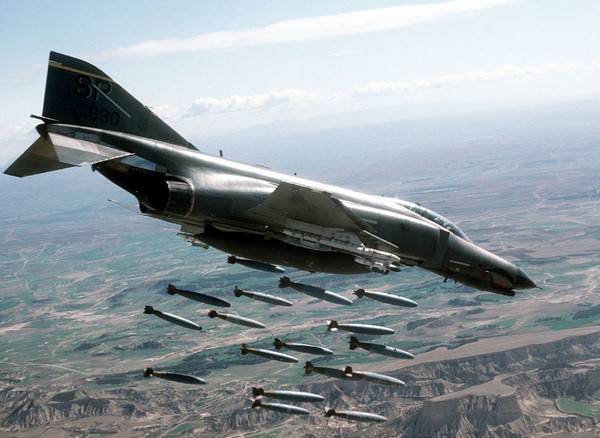
"Phantom" had a noticeable impact on the development of fighters in other countries, becoming the first tactical (front-line) aircraft, which used a powerful pulse-Doppler radar and medium-range air combat missiles. This fighter fully responded to the ideas of the military and designers about the future of fighter aircraft. In 50-60, it was believed that air combat would be reduced to supersonic interception and rocket duels beyond direct line of sight. In this regard, on the "Phantom" of the first modifications there was no gun, and the maneuverability of the aircraft on the horizontal left much to be desired.
The Soviet response to the F-4 Phantom II was the MiG-23 fighter, but its mass production began almost 10 years later. Unlike the Phantom, the Soviet aircraft was single-engine and had a variable sweep wing. MiG commissioning was delayed, because of the high complexity and a number of innovative solutions, the reliability of the first modifications of the MiG-23 was low, and the accident rate was very high. The Soviet fighter also carried medium-range missiles, but he never became a “universal soldier” as a “Phantom”. As a result, several specialized modifications were created on the basis of the MiG-23: the MiG-23ML is a lightweight fighter gaining air superiority with a more powerful engine and improved maneuverability, the MiG-23P is an air defense interceptor, the MiG-23B is a fighter-bomber adapted for bombing assault strikes.
In China, the “analogue” of the F-4 Phantom II was the JH-7 fighter-bomber, which appeared on 30 years later. During the Vietnam War, “Phantom” made a very big impression on the “Chinese comrades”, and after a detailed study of several not too damaged aircraft transported from the jungles of Southeast Asia to the PRC, F-4 decided to copy. However, many American technologies turned out to be too hard for the Chinese and the creation of the aircraft was delayed. By its first flight in 1988, the Chinese Phantom had largely become obsolete. However, with the help of Western experts JH-7 (also known as “Flying Leopard”) managed to bring to mass production. On this shock machine licensed British Rolls-Royce "Spey" Mk.202 engines, previously used on F-4K fighters, are used. The Chinese Type 232H radar borrowed technical solutions from the AN / APQ 120 F-4E American Radar. However, due to the lack of the necessary element base in the PRC, a partial return to the lamp circuits occurred, which increased the power consumption, size and weight of the equipment. According to its flight data and mass-dimensional characteristics, the Flying Leopard is much closer to the Phantom than the MiG-23. The Chinese aircraft is almost completely focused on solving shock tasks and has very modest maneuverability characteristics.
Very high flight data, a high degree of technical excellence, a large range of weapons and payloads led to the fact that the F-4 Phantom II, despite the high cost, was widespread. In addition to the United States, this aircraft was in service in Australia, Britain, Greece, Egypt, Israel, Iran, Spain, Turkey, Germany, South Korea and Japan. "Phantom" became one of the most massive post-war fighters: just in the USA before 1979, 5195 aircraft were built, of which 1384 units were transferred to the allies. The licensed production of the F-4E fighter-bomber up to 1981 was carried out in Japan at the enterprises of the Mitsubishi company (138 units were built). This aircraft with partly Japanese avionics received the designation F-4EJ.
The United Kingdom was the first foreign recipient of the F-4 Phantom II family of aircraft. After the cancellation of a number of ambitious aviation projects in the UK, the Royal Air Force needed an aircraft capable of acting as an interceptor, fighter-bomber and tactical reconnaissance aircraft. In addition, Royal Navy needed an interceptor capable of repelling the attacks of the Soviet Tu-16 missile carriers carrying the anti-ship missiles.
As a prototype for the Navy and Air Force, the British chose the improved F-4J deck multipurpose fighter, which first flew into the air in the 1966 year. In this case, an agreement was reached that the "Phantoms", intended for the UK, will be installed engines Rolls-Royce "Spey" Mk.202 and avionics of British production. It was originally intended to purchase up to 400 Phantom FG.1 (fighter / attack aircraft) and Phantom FGR.2 (fighter / attack aircraft / reconnaissance aircraft), but in practice the Air Force and Navy were limited to purchasing 170 machines.
Initially, FGR.2, better known as F-4M, was used in fighter-bomber and reconnaissance squadrons deployed in the Federal Republic of Germany. The service FG.1 (F-4K) in Royal Navy was not long.
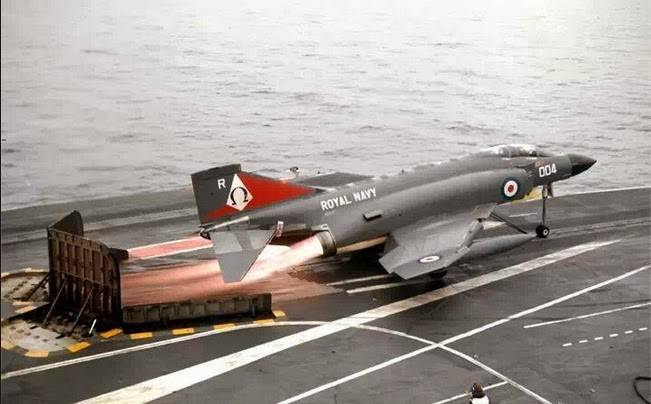
The aircraft carrier HMS Eagle, converted in the second half of the 60-x to house the "Phantoms" and Bukanir bombers, was already sent to the reserve in 1972, because of financial constraints, and the F-4K interceptors were transferred to the Air Force, where they were replaced in the air defense squadrons Lightning F.3 interceptors
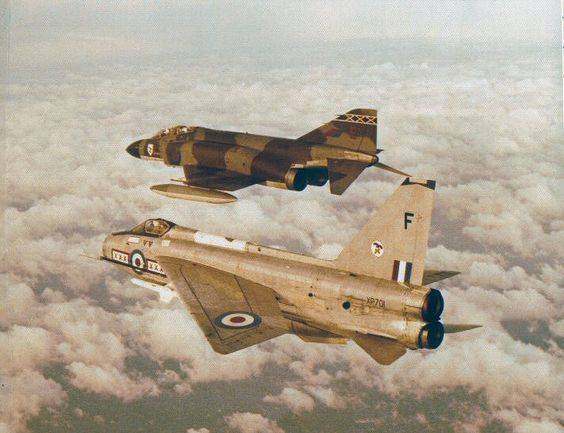
Subsequently, as the Jaguar fighter-bomber entered service, all British "Phantoms" withdrew from the continent and, after retrofit, were focused on air defense tasks. During the Cold War, British interceptors often met in the air with the Soviet long-range bombers Tu-16 and Tu-95.
During the British-Argentine conflict in 1982, three F-4K were transferred to Ascension Island to protect the base from an air attack. The service of the last British "Phantoms" in the interceptor squadrons continued until the 1992 year, with the replacement of the PANAVIA Tornado F3.
Almost simultaneously with the RAF, deliveries of the RF-4E reconnaissance aircraft to the Luftwaffe began. From the second half of 1969, West Germany received the Phantom 132. In 80-90, German RF-4E, F-4E, and F-4F were repeatedly upgraded as part of a combat effectiveness program. The last F-4F, belonging to the wing of the Jagdgeschwader 71 (JG 71), was decommissioned on the 29 June 2013 of the year, after which this fighter wing, based in Vitmund, completely transferred to the Eurofighter Typhoon. From August X-NUMX of the year until the retirement of F-1973F, a total of 4 279 hours spent in the air. Some West German "Phantoms" after the withdrawal from the squadrons were transferred to Turkey.
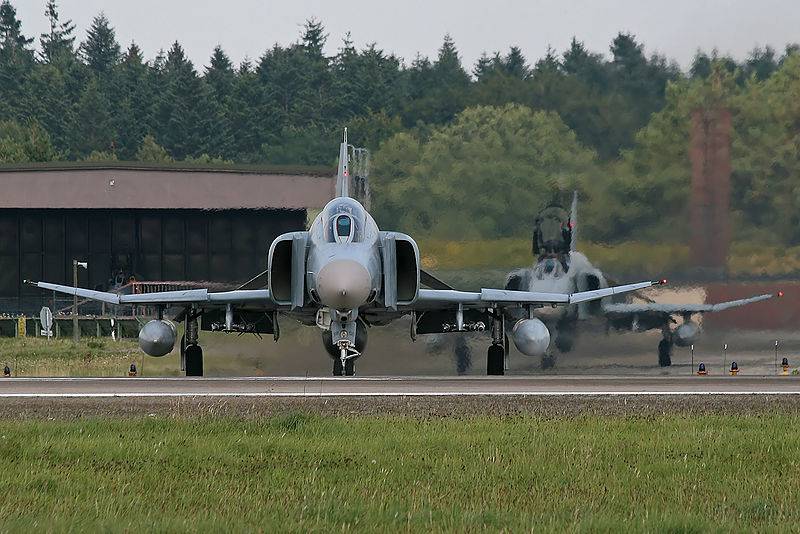
As of the second half of 2016, the F-4E fighter-bombers and RF-4E reconnaissance aircraft took off in Egypt, Iran, Greece, the Republic of Korea, Turkey and Japan. It is abundantly clear that all these planes, built at the latest by the second half of the 70's, are surviving and are at the limit of operational life.
However, the Turkish "Phantoms", modernized by the Israeli company Israel Aerospace Industries, continue to fight. 22 June 2012, the Turkish reconnaissance RF-4E was shot down by Syrian air defense weapons over Syrian territorial waters. In 2015 and 2016, RF-4E repeatedly conducted reconnaissance flights over Syria, and F-4E fighter-bombers bombed Islamist positions in Iraq.
After the start of deliveries of the F-18, the American fleet hurried to part with the F-4S, the last time the Phantom took off from the deck of the aircraft carrier America in 1986. All naval squadrons providing air defense of aircraft carrier groups were reequipped to the F-80A interceptors by mid-14-x. In the US Air Force combat squadrons, the “Phantoms” in 1990 were finally superseded by the X-NUMX generation fighters F-4 and F-15. Until 16, fighter-bombers and reconnaissance aircraft were operated by the US KMP. The last war of the American "Phantoms" was "Desert Storm". The X-NUMX F-1992G Wild Weasel and X-NUMX RF-24C radar hunter participated in the fighting against Iraq. In many ways, the use of far from the newest machines was a forced step. At that time, the F-4G was the only specialized combat aircraft in the US Air Force designed to suppress ground defense. At the same time, the RF-6C was the only tactical aircraft reconnaissance aircraft equipped with high-resolution side-view cameras.
"Phantoms" were used quite intensively during the "First Gulf War". Aircraft almost daily carried out combat missions. Moreover, RF-4C began to implement them even before the official start of the campaign against Iraq. During one of these sorties, the reconnaissance "Phantom" suffered serious damage from anti-aircraft fire, its engines stalled near their air base, and the crew had to eject. In April, 1996, the US National Guard air force finally parted with the latest F-4G Wild Weasel.
In the United States, the aircraft of early modifications, as the resource was developed and more advanced machines entered the troops, were used for various kinds of experiments. For example, in the course of research in the field of ensuring the safety of nuclear facilities, the specialists of the Sandy National Laboratory used the decommissioned Phantom in a crash test, dispersed it on a special sled and smashed it against a concrete wall. The purpose of this experiment was to find out in practice the thickness of the walls of the reinforced concrete shelter necessary to protect a nuclear reactor in the event of an aircraft falling on it.
A few more fighters were transferred to NASA and were involved in various tests of the new rocket technology. So, in the second half of the 60-x F-4A removed from service in the Navy was accompanied at the initial stage of the flight supersonic rocket plane X-15. Several times the "Phantoms", accelerated to supersonic speed, filmed the launch vehicles launched from the Cape from Cape Canaveral. At the beginning-middle of 80-x demilitarized F-4C flew in the course of biomedical research, find out the effect of various kinds of overload on the human body.
Like many other outdated or hopelessly outdated warplanes in the 70-80-ies, the F-4 early modifications were converted into radio-controlled targets. "Phantoms" due to the high speed of flight, armament and a large practical ceiling could imitate not only manned aircraft, but also cruise missiles.
The use of fighters converted into radio-controlled targets, allows you to reproduce the radar and thermal portrait of a real combat aircraft. In addition, the target on the basis of "Phantom" made it possible to realistically assess the striking factors of the warheads of various missiles during contact and remote blasting, since the F-4 fighters had a considerable margin of safety and quite good survivability, which was repeatedly confirmed in combat operations.
On the decommissioned "Phantom" tested anti-aircraft missiles SAM "Patriot" and new missiles "air-to-air". The fleet and the Air Force independently modified the F-4 60-s built in radio-controlled targets, while a single standard for the conversion of aircraft did not exist.
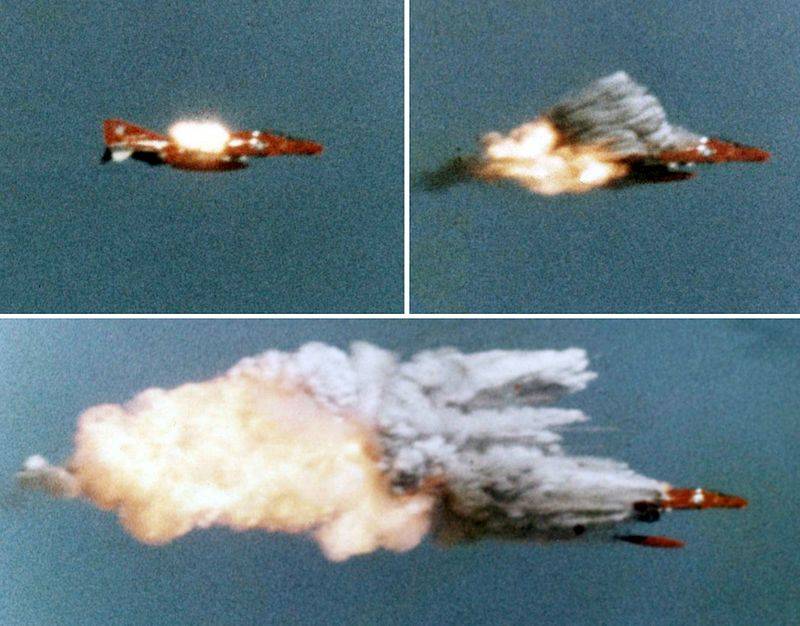
However, the “Phantoms” of the later modifications, which had a large flight resource, were too valuable to shoot as targets in significant quantities. The planes were handed over to the Allies or sent for storage at Davis-Montand. The 70-80s in the United States still in abundance were the outdated F-86 Saber, F-100 Super Saber, F-102 Delta Dagger, F-8 Crusader, T-33 Shooting Star, F-106 Delta Dart - these the cars were converted into radio-controlled targets, and the American Phantoms that were flying out were waiting in the wings at a storage base in Arizona.
This hour came in the second half of the 90-x, when the F-106 Delta Dart interceptors, suitable for conversion to targets and decommissioned, were usable at the graveyard of bones in Davis-Montan. Approximately in 15 years after the F-4 of all modifications were decommissioned in the USA, and in the allied countries, where Phantoms existed, they were replaced with more modern aircraft, it became clear that no prospects for the return of obsolete, but there are no sufficiently strong fighters, and there is no point in storing them further. But unlike the radio-controlled QF-106 targets, when the “Phantoms” were refitted, the military decided to give them enhanced functions.
On the plane retained the possibility of manned flight and suspension weapons. Some of the equipment unnecessary for an unmanned aircraft: the radar, 20-mm gun, TACAN navigation equipment and fuel receivers for air refueling were dismantled. At the same time, thanks to the installation of a highly sophisticated computerized remote control equipment Gulf Range Drone Control (GRDCS), the Phantom unmanned vehicle was able to perform quite complex maneuvers that were previously inaccessible to other radio-controlled targets. Take-off, landing and maneuvers on the flight route in unmanned mode can be carried out both in remote control mode and according to a predetermined program. A transponder and a satellite navigation system are installed on the aircraft with data transmission equipment to the ground control station.
At QF-4, to enhance the realism of the jamming environment, devices for emitting dipole reflectors and heat traps are preserved at the exercises. In addition, part of the radio-controlled targets was adapted for the suspension of containers with equipment for jamming ground-based radars and anti-aircraft missile guidance stations. An unmanned version of a radio-controlled explosive device is installed on the aircraft, designed to eliminate the aircraft in case of loss of control.
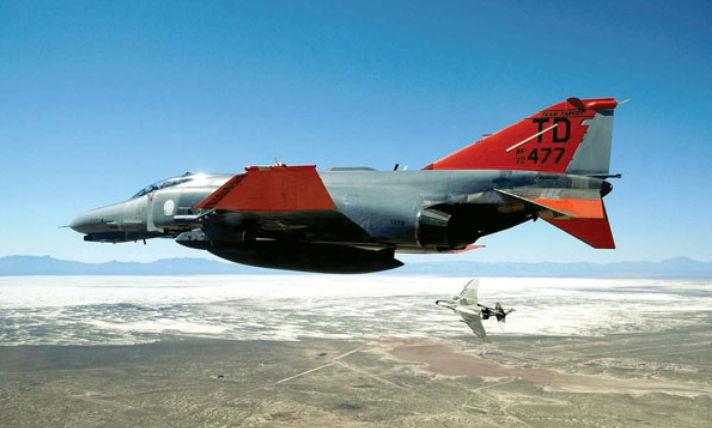
By the time the decision was made to retool the Phantoms in the United States, there were more than 400 aircraft of various modifications in storage, mainly F-4E fighter-bombers, F-4G fighters and RF-4C reconnaissance aircraft. Initially, F-4E and F-4G were reworked, as their reserves were depleted, the turn reached the reconnaissance RF-4C. Earlier modifications, F-4D fighter-bombers and F-4S deck interceptors decided to use as a source of spare parts. Currently, there are still about a hundred “Phantoms” of early modifications in “Davis-Montan”, however, these machines will most likely never rise into the air.
Satellite image of Google Earth: taken from the conservation of F-4 Phantom II at Davis-Montan airbase in 2009
Before being converted into targets removed from conservation, Phantoms underwent diagnostics and a set of remedial measures. Techniques of the Davis-Montan airbase bring the aircraft to flight status, after which they fly over. Here is what the official site of the Eglin airbase wrote about this in April 2013:
The RF-4C Phantom aircraft with the 68-0599 number was delivered to the AMARG for storage on January 18 of the year 1989 and has not flown since. Technicians re-installed hundreds of parts on the aircraft and completed thousands of hours of work to get the car back into flight. This aircraft is the 316 F-4, taken out of storage for the implementation of the full-scale FSAT (full-scale aerial target) program of the Combat Aviation Command.
BAE Systems will convert this vehicle to a QF-4C target aircraft and will eventually be transferred to the 82 Squadron Aerial Target Squadron (ATRS) at Tyndall airbase, ea. Florida.
Using the example of "Phantom", the American system of storage and recovery of combat aircraft retired to the reserve has once again confirmed its effectiveness. In the flying state, it was possible to return the aircraft, released in the middle of 60-s and stored at the base in Arizona for more than 20 years.
The US subsidiary of BAE Systems - BAE Systems Inc (BAE Systems North America) won the contract for the direct conversion of the deactivated “Phantoms” in the United States. From the Davis-Montan airbase, the planes are forwarded to the Mojave airfield in California, where a set of digital equipment for remote control is installed on them.
It is worth adding that the Mojave airfield in Arizona, also known as the Civil Aerospace Center, is in many ways a cult place for American companies engaged in breakthrough research in the field of aviation and rocket production. The center, due to its unique location and the existing infrastructure here, has become the base and testing ground for small companies looking for a place to develop space technologies. This is the first airfield licensed in the United States for horizontal launches of reusable spacecraft. Here, in addition to purely civilian research contracts with the US DoD, work is being done on military topics. In the same hangars where, until recently, the “Phantomov” was being refurbished, reconditioning and re-equipment was carried out in accordance with the American airworthiness standards of the MiG-29 and Su-27 fighters received from Ukraine.
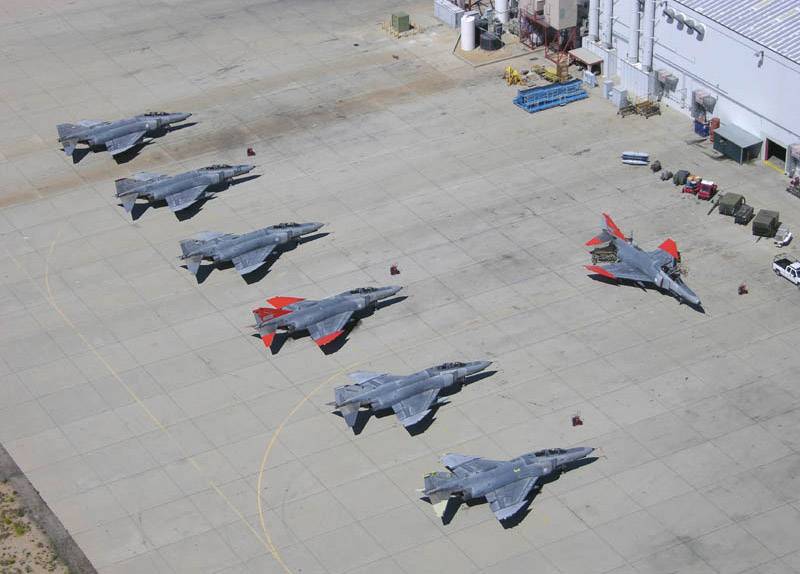
Approximately 10 years ago, during the conversion to the QF-4 aircraft, they began to install an automatic threat recognition system developed by BAE Systems specialists, which makes it possible to get as close as possible to the combat situation during control and training firing. The outboard equipment with optoelectronic and radar sensors, detecting an approaching rocket or radar radiation, automatically selects the best countermeasures from those on board the aircraft and generates an evasion maneuver.
According to information published in open sources, in 2011, the cost of the conversion procedure for one Phantom cost the US budget more than $ 800 000 and since its withdrawal from the storage base has taken about 7 months. The assigned flight life of the retrofitted and refurbished QF-4 is 300 hours. In the process of refitting the wing console, the tail of the target aircraft to redress their visual identification to facilitate their visual identification.
After the test and flyby of QF-4, 82 Squadron of unmanned targets (82 ATRS), based at Holloman air base in New Mexico and in the 53 X armament assessment and testing group (53 WEG) at 2005 WEG, are handed over to 2008's weapons assessment and testing group (29 WEG) at X Tyndall in Florida. In the XNUMX-XNUMX years, at the Tindall airbase, evaluation tests of MiG-XNUMX fighters received from Eastern European countries were also conducted.
Judging from satellite images, the largest number of QF-4 at the airbases "Holloman" and "Tyndall" was as of 2012 year. Now the number of converted into the target "Phantoms" has decreased by about two times. In Florida, over the waters of the Gulf of Mexico, QF-4 unmanned targets were tested to launch new modifications of air-to-air missiles AIM-9X Sidewinder and AIM-120 AMRAAM, and at New York State, Lockheed Martin tested “White Phantom "SAM Patriot Advanced Capability (PAC-3). It is noted that thanks to the BAE Systems Common Missile installed on the Phantoms, the targets were able to evade missiles with a radar guidance system in 10-20% launches, and AIM-9X Sidewinder with massive use of heat traps in 25-30% cases. As a rule, during the tests rockets with an inert warhead were used, and the destruction of the QF-4 target occurred only in the case of a direct hit. In the 2013 year, the mid-range MEADS (Medium Extended Air Defense System) medium-range ground test at the White Sands missile range almost simultaneously destroyed QF-4 and OTR "Lance" flying at supersonic speed from different directions.
On average, the annual decline of the Phantoms at the control and test launches is on 10-15 targets in the Tyndall and 4-5 in the Holloman. In addition to testing in the areas of these two air bases, QF-4 regularly participate in exercises held in other places. If the QF-4 above the ground in New Mexico is controlled by the ground-based GRDC system, then two specially converted E-9A aircraft are used for flights in Florida and in other parts of the United States. These machines are created by Boeing companies based on the civilian turboprop airliner DHC-8 Dash 8 DeHavilland Canada.
On the E-9A installed side-looking radar on the right side of the fuselage and the search at the bottom. There is also equipment for remote control of targets and removal of telemetry from tested missiles.
As already mentioned, the QF-4 has the ability to control in a manned mode, for which all controls and necessary instruments are saved. The QF-4 flights with pilots in the cockpit are carried out mainly at the Holloman airbase. In this case, "Phantoms" conserve the resource of combat aircraft, testing radar systems and training the calculations of the air defense and interceptor pilots, without using weapons.
Piloted QF-4 regularly make "tours" at other air bases, where they are involved in various kinds of exercises and training, depicting enemy bombers. Quite often, "Phantoms" land at the Nellis airbase. It is here that the “US Air Force Combat Training Center” is located, and in the vicinity of the airbase is the largest US aviation testing ground.
Unlike the QF-4 used in unmanned missions, aircraft that fly on a permanent basis with pilots in the cockpit are painted in camouflage characteristic of combat vehicles. But on the tail, unlike the "red-winged" drones Be sure to indicate belonging to the 82nd squadron of unmanned targets. For manned flights, the least worn out converted F-4G Wild Weasel, built in the late 70s, are used. Since 2005, these aircraft, in addition to "combat" service, regularly participate in various air shows in the United States.
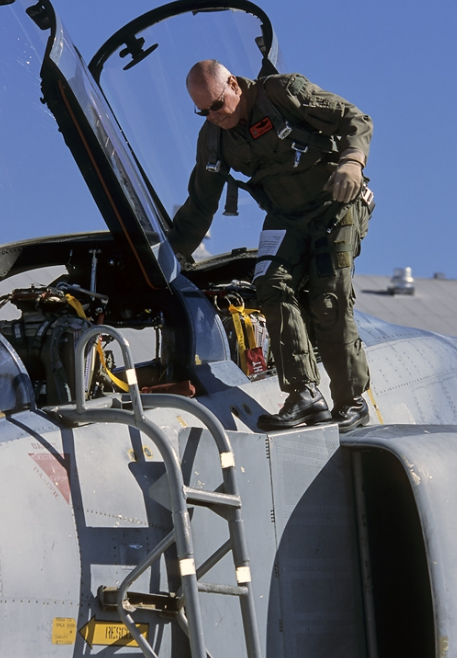
4 pilots of the Air Force and approximately 6 retirees working under contract with the US Department of Defense are allowed to fly on QF-10. All of them are very experienced pilots who flew in the past on the F-4 Phantom II at least 1000 hours.
Service QF-4 at different air bases is carried out in different ways. At the Tyndall airbase, where Phantoms mostly fly in unmanned mode and mostly one way, less attention is paid to maintaining the entire fleet of targets in flight. To prepare the flight of specific machines, often borrowing the necessary parts and components from other aircraft. In this case, maintenance and maintenance of QF-4 is carried out mainly by military personnel.
At the Holloman airbase, where QF-4 decreases much less, target planes are more careful. Here, more attention is paid to maintaining the flight state of the machines on which manned flights are carried out. At the same time, the fleet of “red-winged” targets, which is less numerous compared to the Tindall airbase, has a larger percentage of aircraft ready to fly. At the Holloman airbase, the Phantom service is handled by the same retired contract workers as airplanes.
In addition to testing air defense systems and radar in manned mode and use as unmanned targets, for deserved aircraft found another use. In January, the AGM-2008 HARM combat anti-radar missile launched by the QF-4 unmanned aircraft hit the radar simulator at the Nellis test site for the first time.
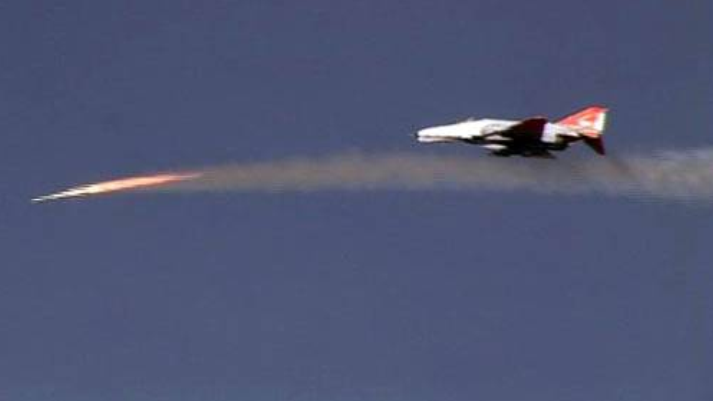
Thus, the phantoms converted into drones were able to suppress enemy air defenses. It is assumed that unmanned QF-4, equipped with PI and means of electronic reconnaissance, are able to take the brunt of anti-aircraft missiles, to identify and partially suppress unmasked positions of the radar and air defense systems. And significantly reduce losses among pilots when performing operations to suppress enemy air defenses.
Nevertheless, the century even unmanned "Phantoms" ends. The age of the newest aircraft built in the United States is approaching 40 years. At the Davis-Montan airbase, practically no aircraft of this type could be recovered left, and at the end of 2016, it was announced that the Air Force would no longer order re-equipment of the F-4 fighter jets in QF-4. From the 2012 of the year, the F-16A / V Fighting Falcon's early modifications are converted into an unmanned radio-controlled version of the QF-16.
In this regard, ceremonial events dedicated to the F-16 Phantom II aircraft took place at the Holloman airbase in New Mexico 2016 December 4. In the ceremonial ranks over the runway of the airbase, the four QF-4 passed. However, this does not mean that the service of the unmanned Phantom has ended. On two air bases in New Mexico and Florida, there are about fifty unmanned red-winged targets. Given the pace of "natural" loss, they will be enough for another few years.
Based on:
https://www.flightglobal.com/news/articles/picture-us-air-force-gets-final-qf-4-aerial-target-393813/
http://www.military.com/equipment/qf-4-aerial-target
http://www.warbirdsnews.com/warbirds-news/retiring-qf-4-stops-aviation-nation.html
http://www.fencecheck.com/content/index.php?title=The_Final_Mission:_The_USAF%92s_QF-4_Target_Drones
http://www.thenorthspin.com/page_people_alan_r.html
http://www.warbirdsnews.com/warbirds-news/pharewell-phantom.html
http://www.aero-news.net/index.cfm?do=main.textpost&id=dc6a5114-b689-4144-a123-99e4c40a2122
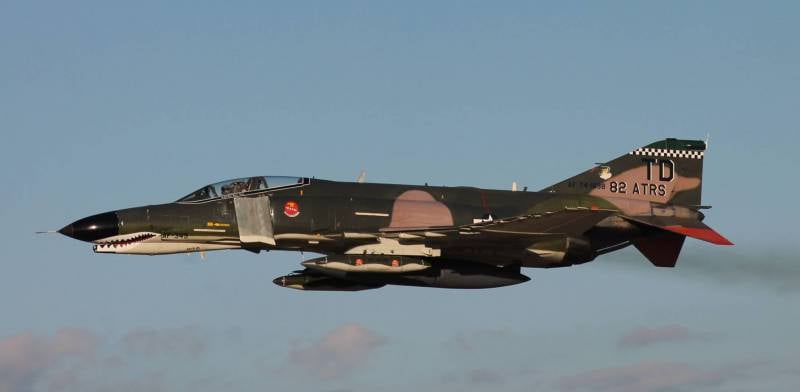
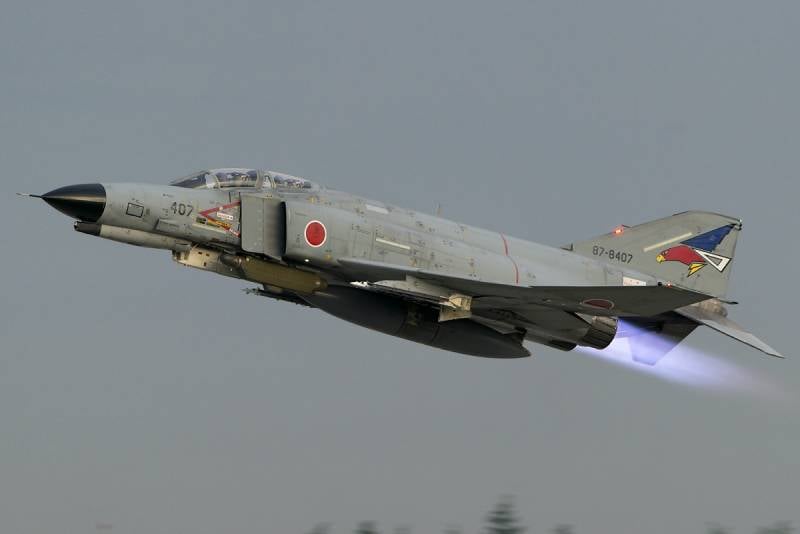
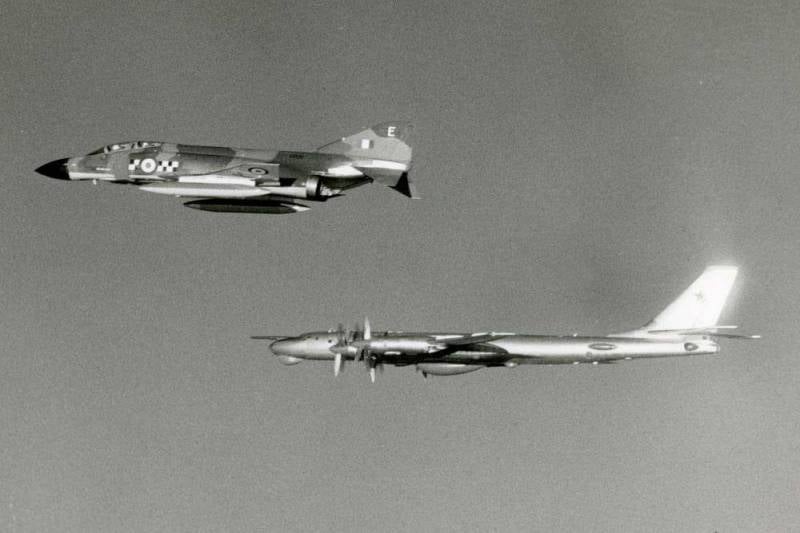
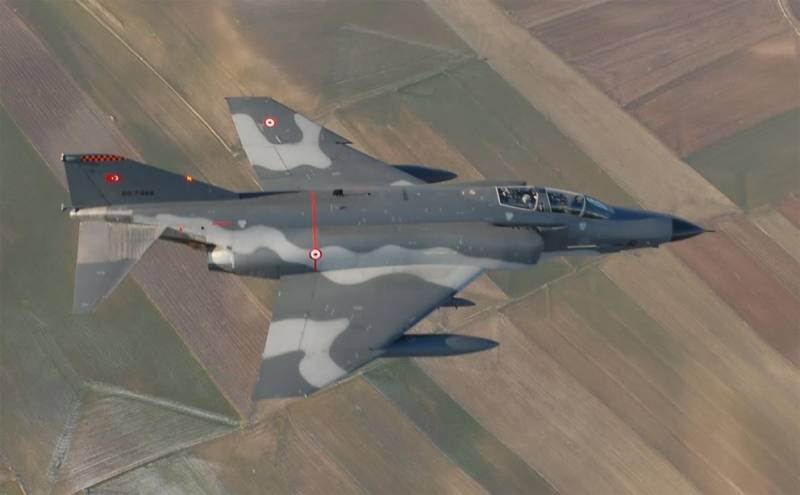
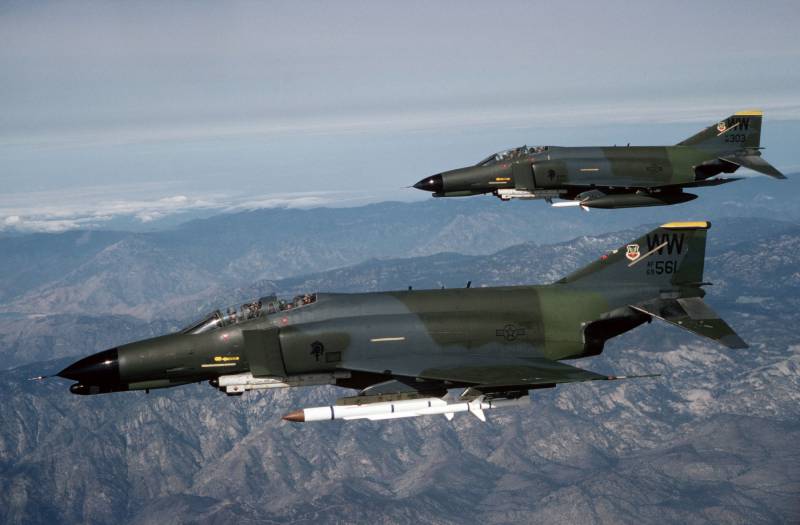
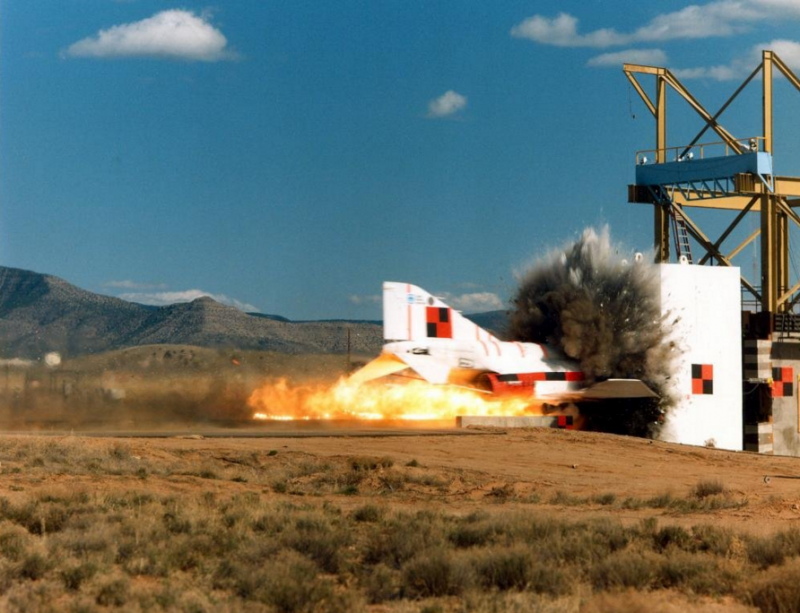
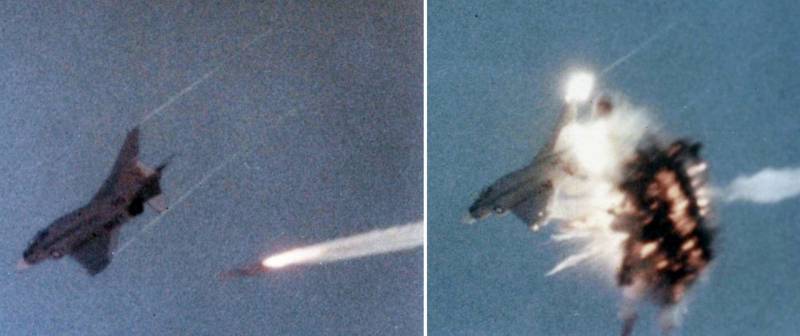
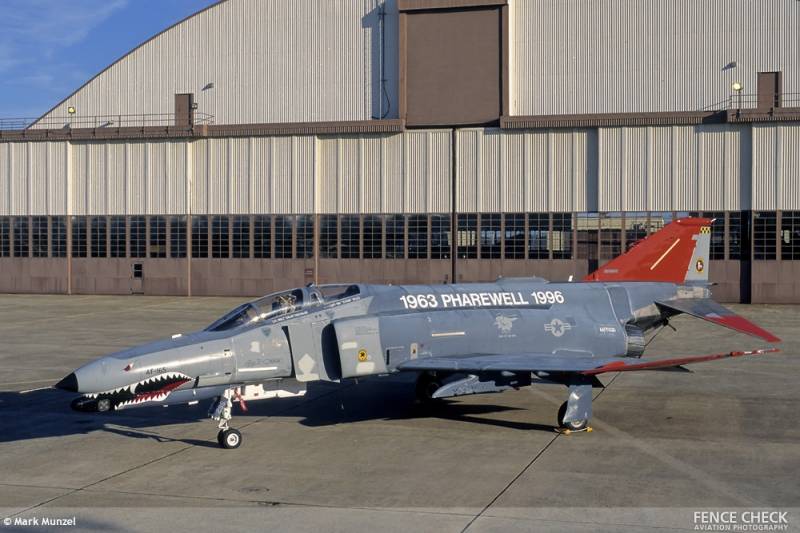
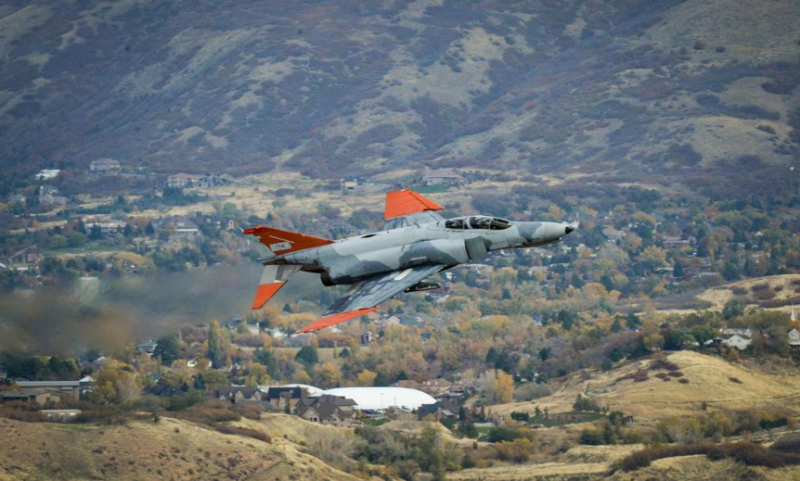
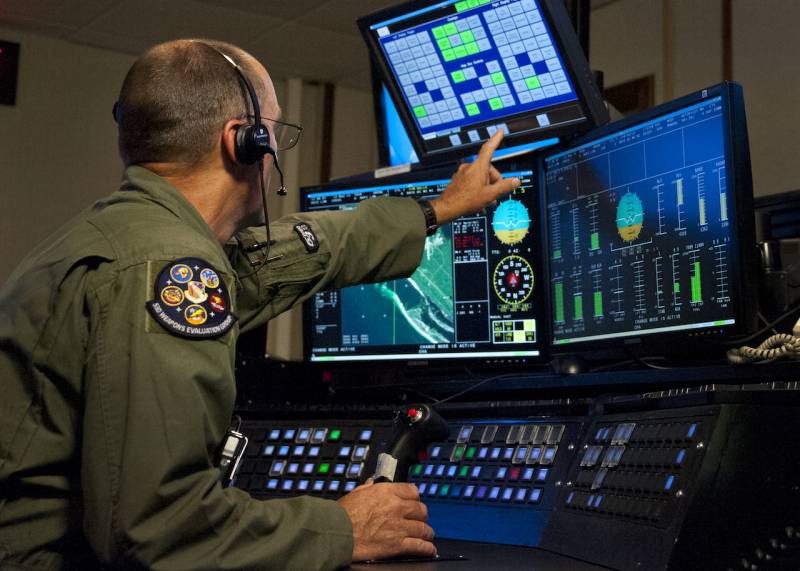
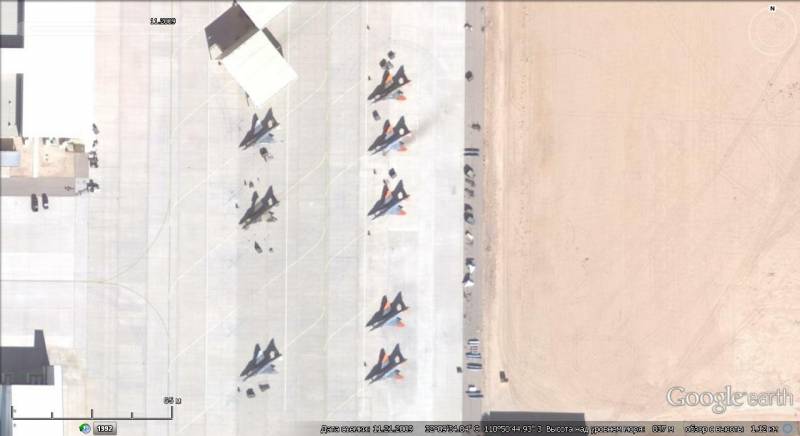
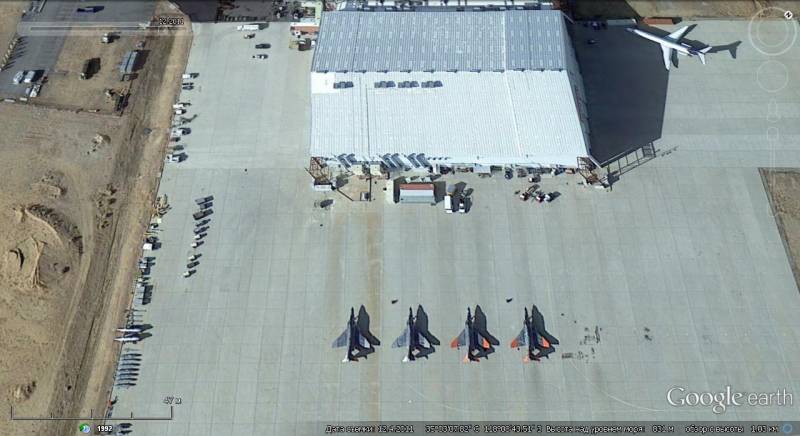
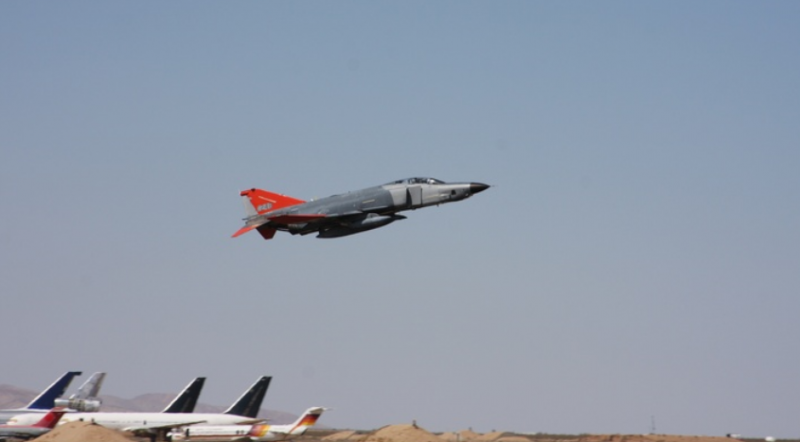
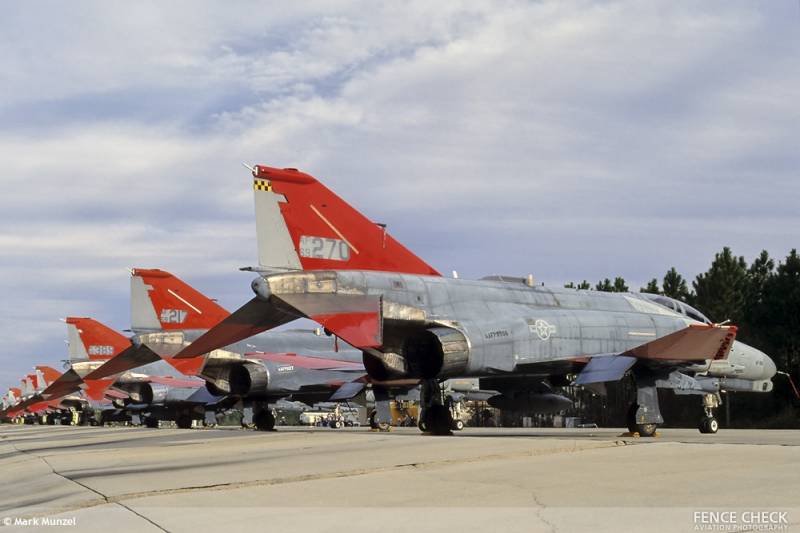
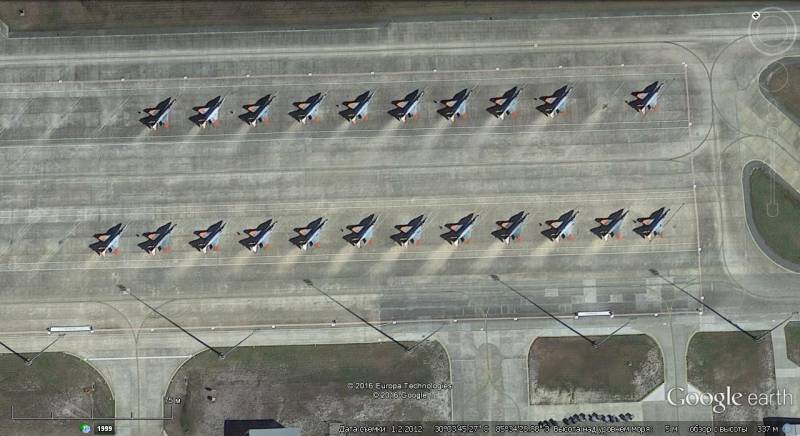
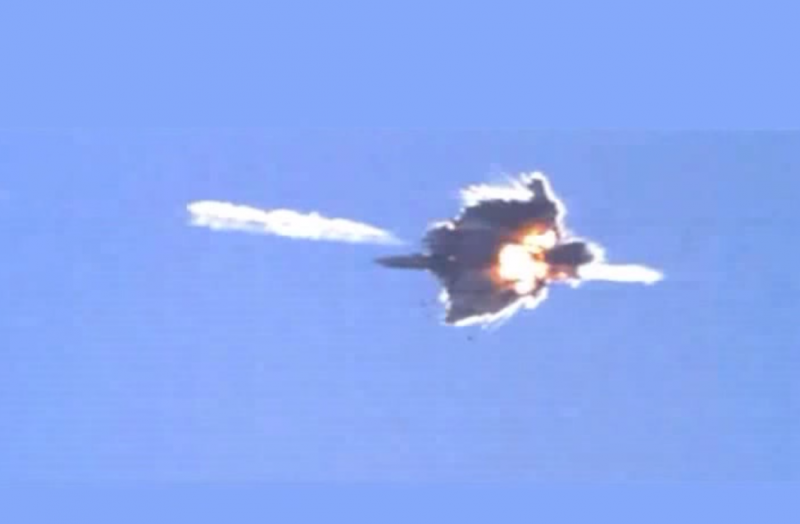
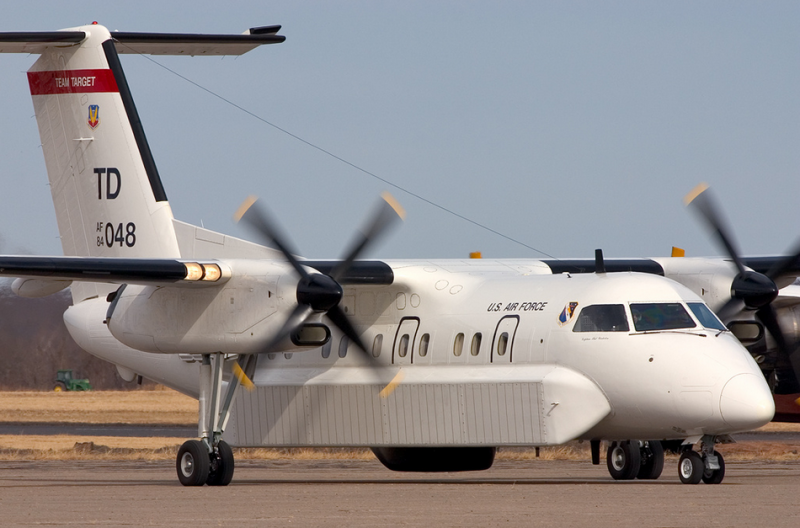
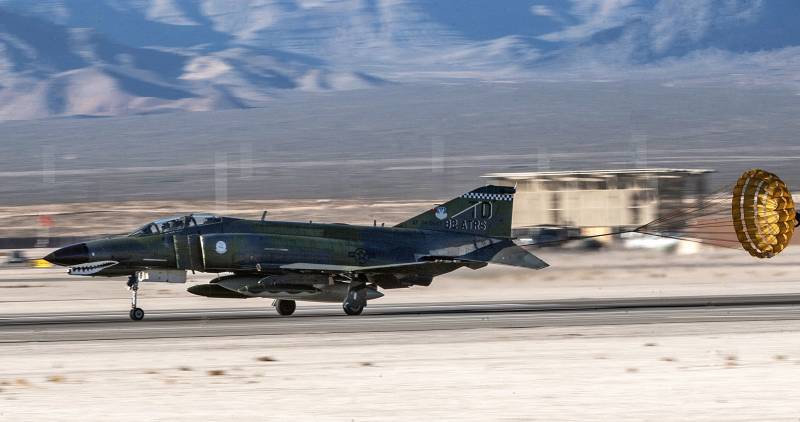

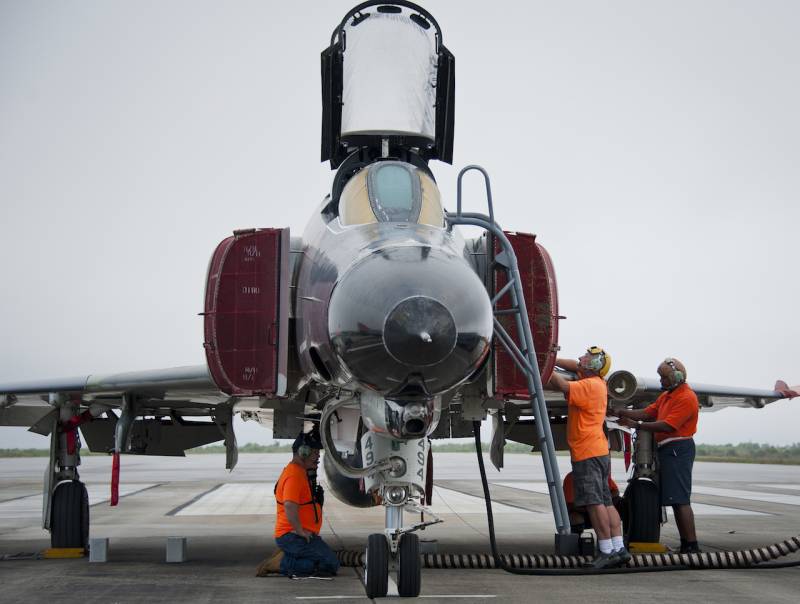
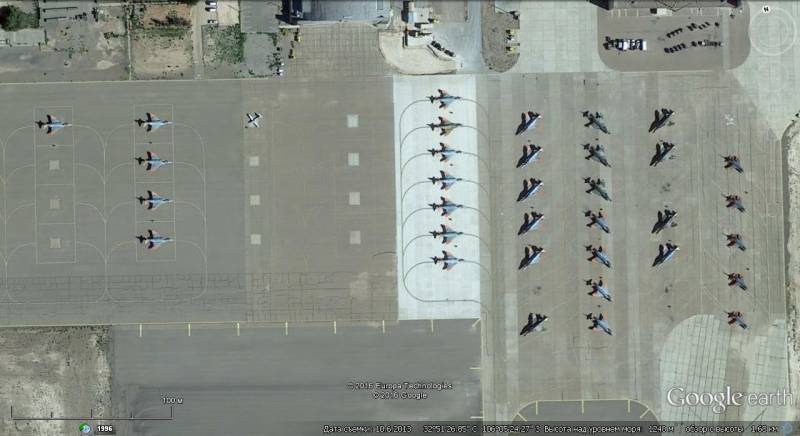
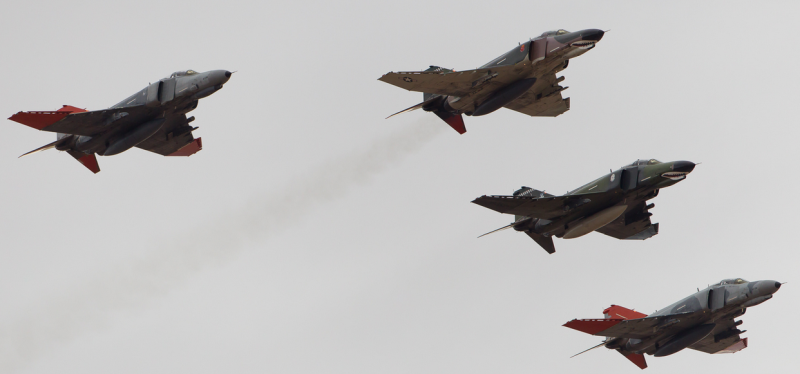
Information